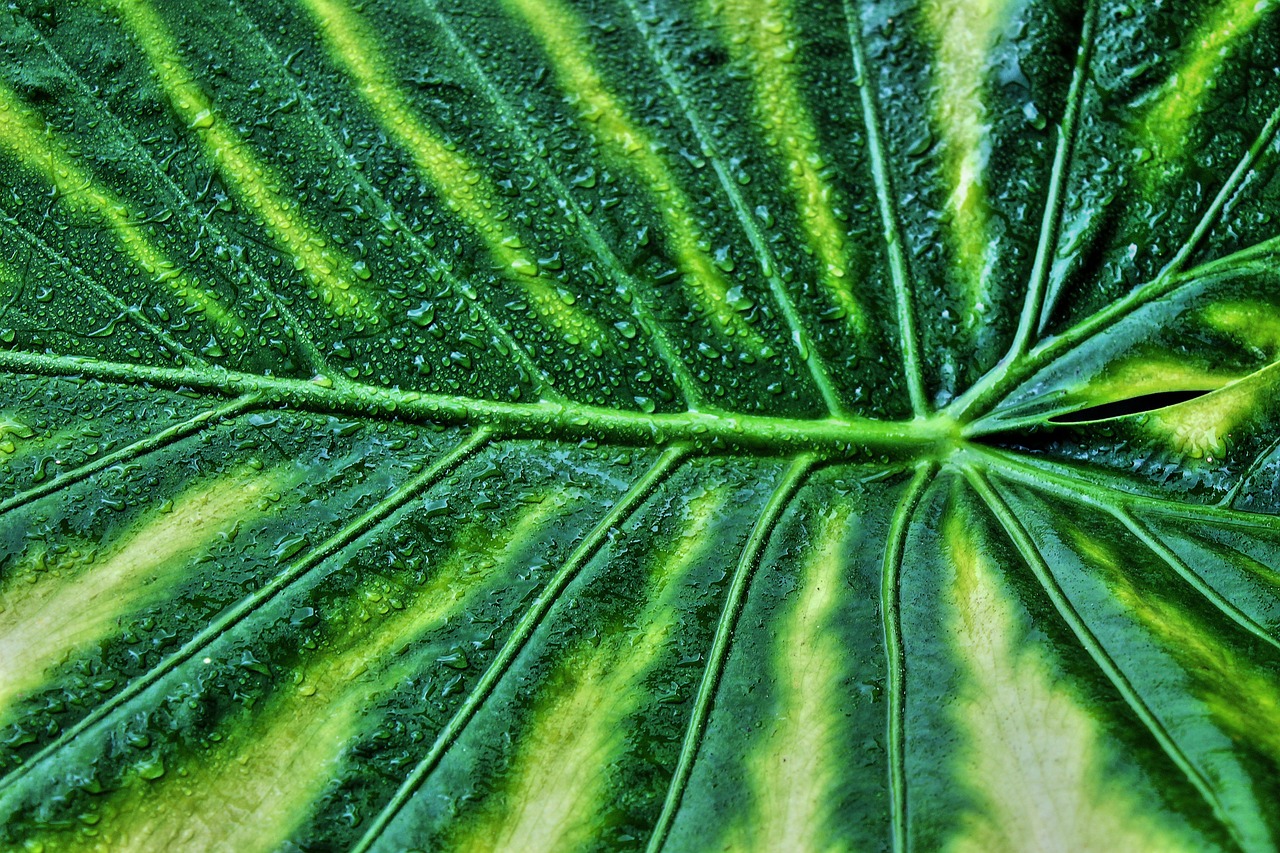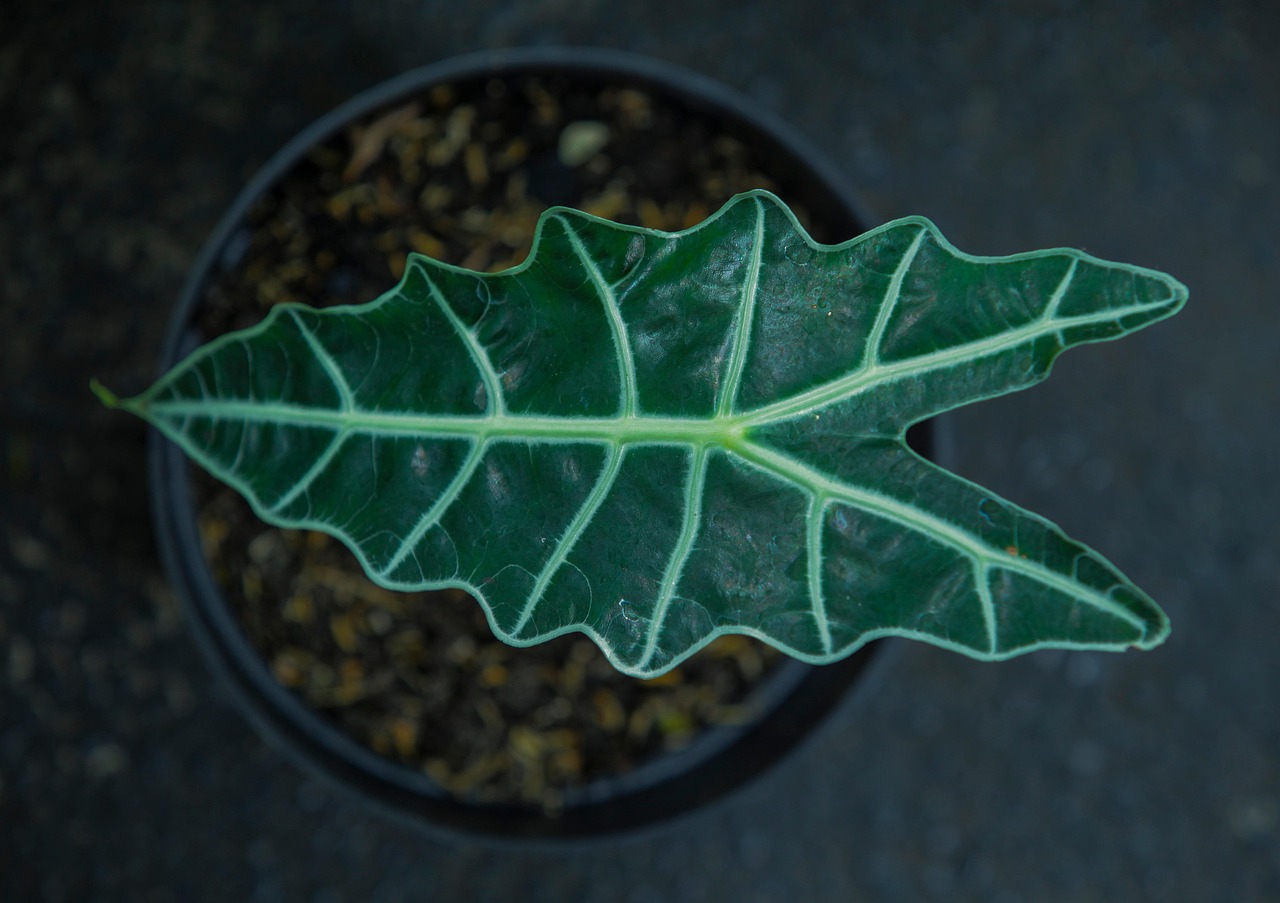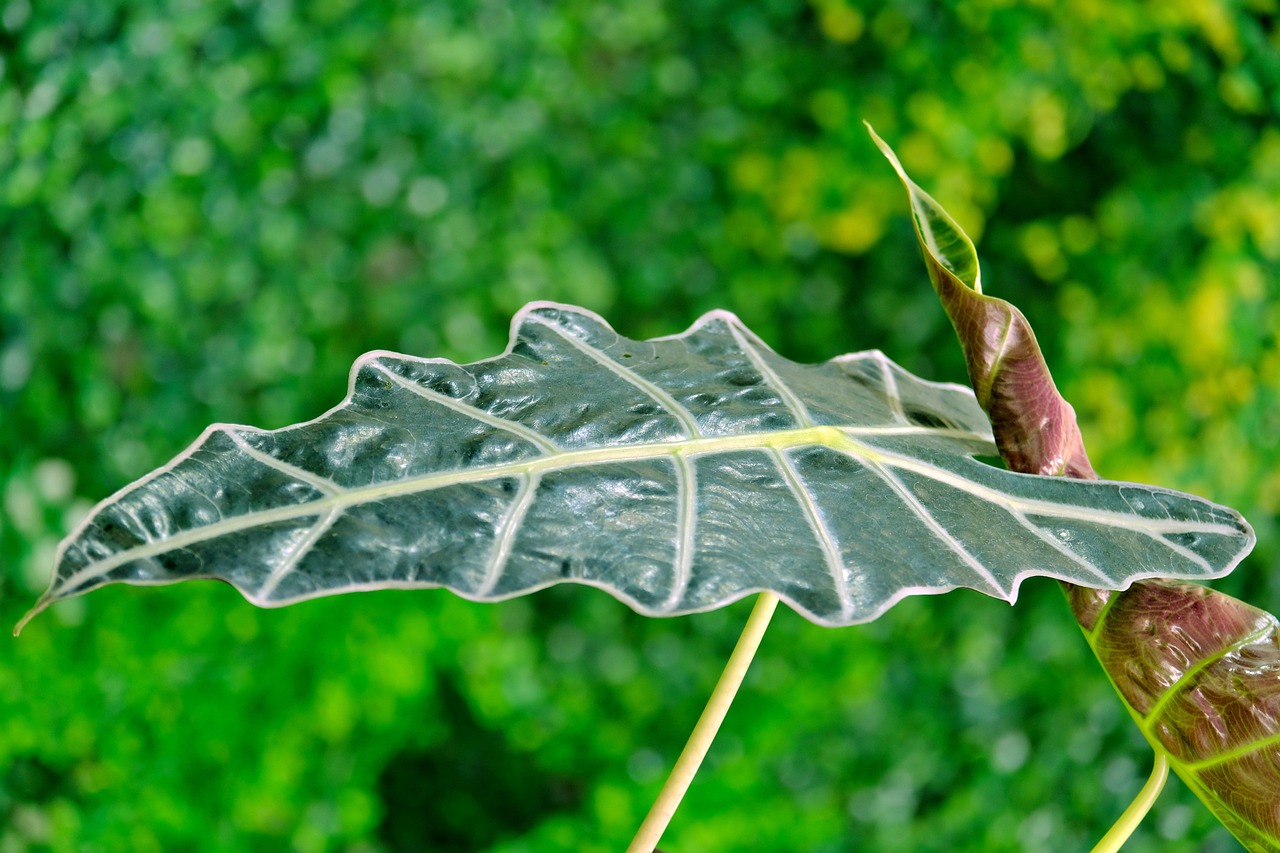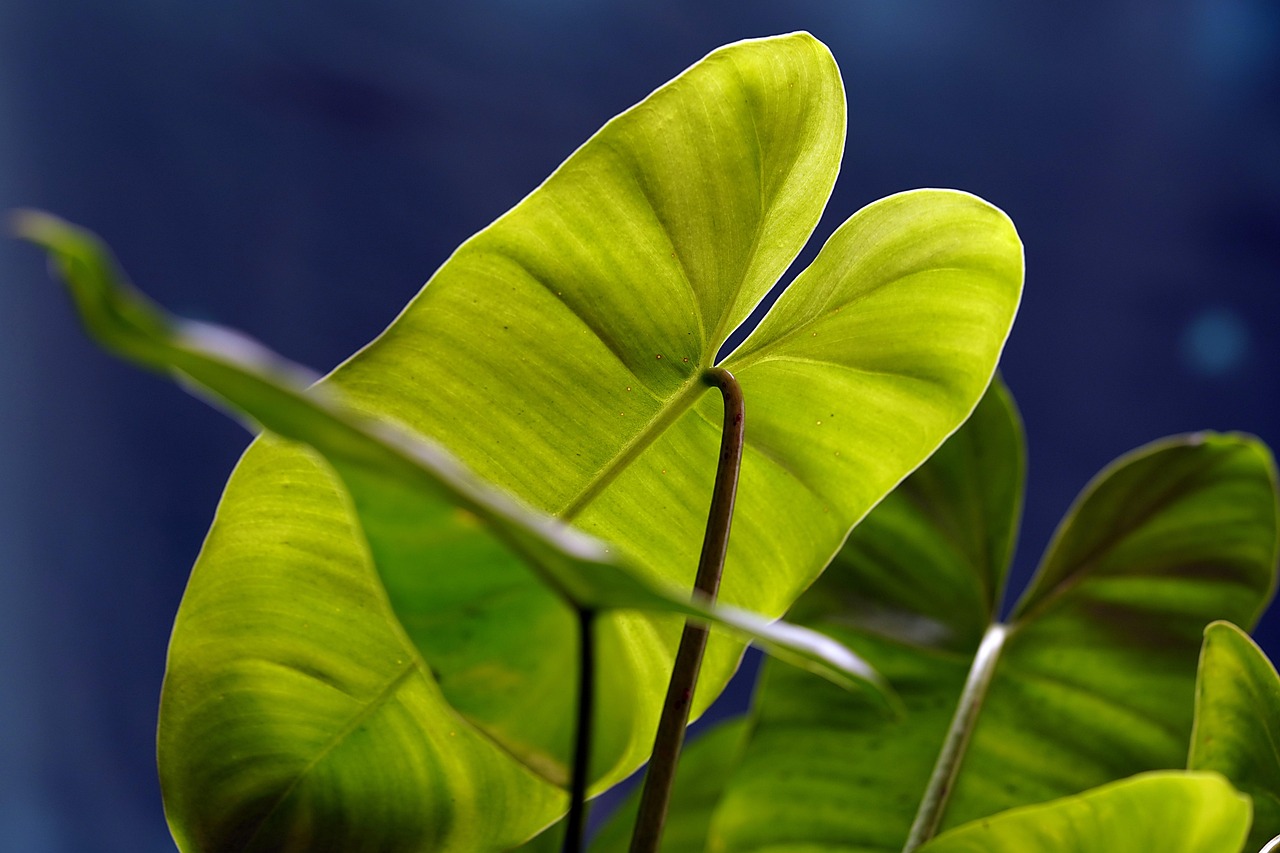Yes, Alocasia plants are toxic to cats. They contain calcium oxalate crystals, which can cause irritation and discomfort if ingested. Symptoms may include drooling, vomiting, and difficulty swallowing. Pet owners should be cautious and keep these plants out of reach of their feline companions.
Understanding Alocasia Plants

Alocasia is a genus of tropical plants known for their striking foliage and unique appearance. Commonly referred to as elephant ear plants, they are popular houseplants due to their dramatic leaves and relatively easy care requirements. Native to Southeast Asia, Alocasia plants thrive in warm, humid environments. Their large, arrow-shaped leaves can add a touch of the exotic to any indoor space.
While many people appreciate Alocasia for its beauty, it’s crucial to understand the potential risks associated with keeping these plants in homes with pets, particularly cats. The toxicity of Alocasia is primarily due to the presence of calcium oxalate crystals. These microscopic crystals can cause significant health issues for pets when ingested.
Toxic Ingredients in Alocasia
The main component that makes Alocasia toxic to cats is calcium oxalate. This compound can lead to irritation in the mouth and throat of pets who chew on or ingest parts of the plant. The reaction can vary depending on the amount consumed and the individual pet’s sensitivity.
When cats come into contact with Alocasia, they may experience a range of symptoms. It’s essential for pet owners to recognize these signs early to ensure their cat receives prompt medical attention if necessary.
| Symptoms of Alocasia Toxicity | Description |
|---|---|
| Drooling | Excessive saliva production due to irritation. |
| Vomiting | Cats may vomit as a response to irritation. |
| Difficulty Swallowing | Pain or discomfort may make swallowing challenging. |
| Lethargy | A general lack of energy or enthusiasm in behavior. |
Preventing Alocasia Toxicity in Cats
To keep your cat safe, prevention is key. Here are some strategies you can implement:
- Place Alocasia plants in areas that are completely inaccessible to your cat.
- Consider using hanging planters or high shelves if you want to keep these plants indoors.
- Use deterrents like pet-safe sprays that discourage cats from approaching certain areas.
- Educate yourself about other toxic plants that could pose a risk to your pets.
By taking these precautions, you can enjoy the beauty of Alocasia while ensuring your feline friend remains safe from its harmful effects. Awareness and vigilance play vital roles in preventing accidental ingestion.
What to Do If Your Cat Ingests Alocasia
If you suspect that your cat has ingested any part of an Alocasia plant, it is important to act quickly. Here are the steps you should follow:
- Observe your cat for any signs of distress or symptoms mentioned earlier.
- Contact your veterinarian immediately for advice on how to proceed.
- Provide your vet with information about the plant type and amount ingested.
- Follow any instructions given by your veterinarian regarding treatment or care.
Knowing what steps to take can significantly impact your cat’s health if an incident occurs. Quick action ensures that your pet receives the necessary care promptly.
Identifying Alocasia Varieties
Understanding the different varieties of Alocasia can help pet owners make informed decisions about which plants to include in their homes. While all Alocasia species contain calcium oxalate, some may have varying levels of toxicity or symptoms associated with ingestion. Here are a few common types of Alocasia:
- Alocasia Amazonica: Also known as the African Mask Plant, it features striking arrow-shaped leaves with prominent veins.
- Alocasia Polly: A compact version with dark green leaves and white veins, perfect for smaller spaces.
- Alocasia Zebrina: This variety is known for its unique zebra-striped stems and large, decorative leaves.
- Alocasia Macrorrhiza: Commonly called Giant Taro, it has large, paddle-shaped leaves and can grow quite tall.
Each of these varieties is equally toxic to cats. Therefore, regardless of the type you choose, it is vital to take precautions to keep your feline companions safe.
Symptoms of Alocasia Toxicity in Detail
Recognizing the symptoms of Alocasia toxicity is crucial for all pet owners. Here are some details about the most common signs your cat may display if they ingest Alocasia:
Gastrointestinal Distress
When a cat consumes Alocasia, the most immediate symptoms often relate to the gastrointestinal tract:
- Vomiting: This is a common response as the body attempts to rid itself of the irritant.
- Diarrhea: Some cats may experience loose stools, indicating digestive upset.
- Lack of Appetite: If your cat feels unwell, they may refuse food or show less interest in eating.
Oral Irritation
The presence of calcium oxalate crystals can lead to significant irritation in the mouth and throat:
- Pawing at Mouth: Cats may paw at their face or mouth in response to discomfort.
- Excessive Drooling: Increased saliva production is a common reaction to oral irritation.
- Swelling: In some cases, swelling of the mouth or throat may occur, leading to difficulty in swallowing.
Caring for Cats with Alocasia Exposure
If your cat shows any signs of distress after exposure to an Alocasia plant, immediate care is essential. Here are steps to manage their condition until you reach a veterinarian:
- Rinse their Mouth: If possible, gently rinse your cat’s mouth with water to remove any plant material.
- Keep Them Calm: Stress can exacerbate symptoms. Create a quiet space for your cat to relax.
- Avoid Home Remedies: Do not use any home remedies without consulting your veterinarian first, as they may worsen the situation.
- Monitor Symptoms: Keep an eye on your cat’s behavior and symptoms as you prepare to seek professional help.
Alternatives to Alocasia for Pet Owners
If you love houseplants but want to avoid the risk associated with Alocasia, there are several pet-friendly options available. Here are some alternatives that are safe for cats:
- Ponytail Palm (Beaucarnea recurvata): This unique plant is non-toxic and easy to care for.
- Bamboo Palm (Chamaedorea): A great air purifier and safe for pets.
- <strongSpider Plant (Chlorophytum comosum): Known for its air-cleaning abilities and is non-toxic to cats.
- Paw Print Plant (Calathea): A lovely option with attractive foliage that is safe for cats.
Choosing non-toxic plants allows you to enjoy greenery in your home while keeping your pets safe from harmful substances. Always research and verify plant safety before bringing new additions into your living space.
Understanding Calcium Oxalate Crystals
Calcium oxalate crystals are the primary toxic agent found in Alocasia plants. These microscopic crystals can cause irritation and discomfort when ingested by pets, particularly cats. Understanding how these crystals work can help pet owners take necessary precautions.

3>How Calcium Oxalate Affects Cats
When a cat bites into an Alocasia leaf, the sharp edges of the calcium oxalate crystals can cause immediate physical irritation in the mouth and throat. Here’s how this toxicity manifests:
- Immediate Pain: The crystals can create a burning sensation, leading to drooling and pawing at the mouth.
- Swelling: Inflammation may occur in the oral cavity, making it difficult for the cat to eat or drink.
- Gastrointestinal Issues: Ingesting the plant can lead to nausea, vomiting, and diarrhea due to irritation of the digestive tract.
Awareness of these effects helps in recognizing symptoms early, allowing for prompt veterinary intervention if necessary.
Preventive Measures for Pet Owners
Taking preventive measures is essential for pet owners who wish to have Alocasia plants in their homes. Here are strategies to minimize risk:
Creating Safe Spaces
Design your home with specific areas where pets are not allowed to access potentially toxic plants. Consider the following:
- High Shelves: Place Alocasia on high shelves where your cat cannot reach.
- Closed Rooms: Keep plants in rooms that can be closed off from pets, such as offices or guest rooms.
- Hanging Planters: Utilize hanging planters to keep plants out of reach while still enjoying their beauty.
Behavioral Training
Training your cat can also be an effective way to ensure their safety around houseplants. Here are some tips:
- Positive Reinforcement: Reward your cat for staying away from plants with treats or affection.
- Distraction Techniques: Provide engaging toys and activities to keep your cat occupied and away from plants.
- Verbal Cues: Teach commands like “no” or “leave it” to discourage unwanted behavior around plants.
The Role of Plant Placement
The placement of Alocasia plants within your home can significantly affect your cat’s safety. Here are some guidelines to consider:
- Avoid Common Areas: Keep Alocasia away from places where your cat frequently roams, such as living rooms or kitchens.
- Use Plant Stands: Elevating plants on stands can deter cats from accessing them easily.
- Monitor New Additions: When introducing new plants, observe how your cat interacts with them before deciding on their final location.
Resources for Pet Owners
For pet owners looking to educate themselves further on plant safety, there are many resources available. Consider the following:
- The ASPCA’s Toxic Plant List: This is a comprehensive resource detailing various plants that are toxic to pets, including cats.
- Your Veterinarian: Consulting with your veterinarian can provide tailored advice regarding plant safety and care for your specific pet.
- Online Pet Care Communities: Engaging with online forums and communities can offer insights and shared experiences from other pet owners.
Staying informed about plant safety is vital for ensuring a harmonious home environment for both pets and plants. Always seek knowledge and remain vigilant about the types of flora you introduce into your living space.
The Importance of Veterinary Care
If you su

spect that your cat has ingested any part of an Alocasia plant, seeking veterinary care is crucial. Here are some reasons why prompt attention is necessary:
- Professional Assessment: A veterinarian can evaluate the severity of the situation and recommend appropriate treatment.
- Treatment Options: Depending on the symptoms, treatment may include medications to reduce pain or nausea and support for hydration.
- Preventive Follow-Up: A vet visit allows you to discuss preventive measures for the future, ensuring your home remains safe for your feline friend.
Your pet’s health and well-being depend on quick action and proper care. Being proactive about potential hazards, such as Alocasia toxicity, is a vital part of responsible pet ownership.
Long-Term Care and Management of Alocasia with Cats
For pet owners who wish to keep Alocasia plants in their homes, understanding long-term care and management is key. This includes not only plant maintenance but also ensuring a safe environment for your cats. Here are some ongoing strategies to consider:
Routine Maintenance of Alocasia Plants
Caring for Alocasia involves regular maintenance to keep the plants healthy and vibrant. Here are some tips:
- Watering: Alocasia prefers moist soil but should not be overwatered. Ensure proper drainage to prevent root rot.
- Humidity: These plants thrive in high humidity. Consider using a humidifier or misting the leaves regularly.
- Fertilization: Use a balanced fertilizer during the growing season to support healthy growth.
- Pest Control: Regularly check for pests like spider mites or aphids, which can affect the plant’s health.
By maintaining the health of your Alocasia, you can enjoy their beauty without compromising the safety of your pets.
Creating a Safe Environment
Alongside maintaining your plants, creating a safe environment is essential for reducing risks. Here are ways to enhance safety:
- Regular Monitoring: Keep an eye on your cat’s behavior around plants. If they seem overly curious, it may be time to reconsider plant placement.
- Alternative Distractions: Provide your cat with safe alternatives to explore, such as cat grass or catnip, to deter them from harmful plants.
- Education: Teach family members about the dangers of toxic plants, ensuring everyone understands the importance of keeping Alocasia out of reach.
Consulting with Experts
For more

in-depth knowledge, consider consulting with experts in pet care or botany. Here are some resources that can provide additional information:
- Veterinary Clinics: Many veterinarians offer advice on pet-safe plants and can recommend alternatives if needed.
- Local Gardening Centers: Staff at gardening centers may provide insights into plant care and safety regarding pets.
- Online Forums: Engaging with online communities focused on pet care and plant enthusiasts can help you gather practical tips and shared experiences.
Utilizing these resources can help ensure you have all the information necessary for making informed decisions about keeping Alocasia plants in a pet-friendly environment.
Final Thoughts
In conclusion, while Alocasia plants can enhance the aesthetic appeal of your home, it is essential to recognize their toxicity to cats and take necessary precautions. Understanding the symptoms of toxicity, implementing preventive measures, and providing proper care for both your pets and plants are crucial steps in managing this risk. By staying informed and proactive, you can create a safe and beautiful living space that accommodates both your love for houseplants and your responsibility as a pet owner.
Ultimately, being aware of the potential hazards associated with Alocasia and similar plants allows for a harmonious coexistence between your pets and your greenery. Remember that your cat’s health and happiness should always come first, and choosing the right plants can help ensure a safe and enjoyable environment for everyone in your home.
